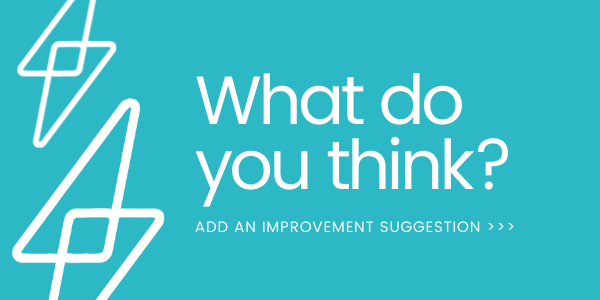How Do Patient Education Systems Reduce Healthcare Costs?
7 minute read | 19/11/2021

Patient education systems have many benefits, one of the greatest being reduced healthcare costs. For hospitals and Trusts around the UK, patient education is high up on the agenda, helping relieve staff workload and recuperate funds that can be used for recovery after the pressure of the pandemic.
With even more patients and higher admission rates than in recent years, education seems to be even more critical, not just in increasing patient empowerment but also in enabling healthcare facilities to function — even at their most basic level.
Without proper patient education, hospitals are at risk of buckling under high readmission rates and financial burden from being over capacity, both in mainstay hospital wards and emergency departments. Yet, even after the pandemic, patient education is a crucial objective. Either way you look at it, better-informed patients make for a better healthcare ecosystem.
- A journey to better-informed patient populations
- Patient education to reduce healthcare costs: How it works
- Patient education right now: What's available?
A journey to better-informed patient populations
Better-informed patients lead to patient empowerment, a decline in diagnosis-related mental health issues and more streamlined services across the healthcare landscape. We call this ideal health literacy, where patients comprehend their diagnosis, they’re confident in their post-care instructions and know the preventative measures they can take to stop it from recurring.
Health literacy isn’t just an ideology. It’s proven to work in hospital environments. Studies show that facilities with educational programs saw:
- Hospitalisation drop by 32%
- Emergency department visits drop by 14%
- Overall costs decline by 11%
Furthermore, those without health literacy consume twice as much healthcare services, showing just how impactful education can be.
Health literacy isn’t just about understanding what your condition means on the surface. Instead, it goes much deeper than that. Those with health literacy and experience in an education program know how to manage post-discharge and are comfortable asking doctors the right questions during a consultation. For these patients, a feeling of control and accountability stops them from ending up in A&E departments or being readmitted to a ward for the same ailment.
Something as simple as knowing the correct medicine dosage and being aware of the ideal lifestyle can make all the difference. In patient education, everyone wins. Both the patient and the hospital benefit from shared knowledge in this scenario.
Patient education to reduce healthcare costs: How it works
Of course, the primary benefit of patient education is all about the patient. Still, a subsequent advantage is the cost-savings that can be reinvested into better hospital infrastructure and patient experience.
But how exactly does patient education translate to more funds for a facility?
Lower readmission rates
By introducing accountable care where the individual recognises their responsibility for their health, patient education can dramatically reduce readmission rates. This gives budgets some much-needed breathing room and frees up beds in the process.
Patient education discourages people from unnecessarily leaning on the public (or in some cases, private) healthcare system, helping relieve pressure from busy teams and free up time to spend on the most critical cases. This is imperative in some overloaded parts of the NHS, such as the A&E department and is a great motivator to start investing in education across today’s hospital population to help tomorrow’s outlook.
It isn’t that patient education will dramatically stop individuals needing attention when their case calls for it. In many cases, hospitalisation can be prevented if the individual follows specific healthcare instructions or alters areas of their life. These minor tweaks in routine can be lifesaving for healthcare facilities and are in the individual’s best interest.
Increase patient satisfaction
While happy, smiley patients might not have an obvious cost benefit, keeping disgruntled patients to a minimum helps keep the healthcare system under control. The small time saving of not needing a nurse to help with entertainment or answer unnecessary questions can have a huge impact when you think about it on a mass scale.
Health education isn’t classified as entertainment, but it’s a productive way for patients to spend some of their time in the hospital. It helps patients occupy themselves during their stay and feel more positive and autonomous about their recovery.
In addition, it helps patients find answers to their most common queries. We may all have follow-up questions, for example, about a new medication, how to administer it and what it contains, some of which can be answered by education systems rather than by a healthcare professional.
———————————————————
We care about increasing customer satisfaction. If you’re a user of WiFi SPARK, leave your suggestion in our box linked below. We’ll review it, action it and roll it out so your SPARK journey is as smooth as it can be.
———————————————————
Lower impact aftercare
Intensive aftercare happens when patients feel out of their depth and in the dark about their role in recovery. Follow-up appointments might multiply and ad-hoc calls with a specialist might appear. While healthcare facilities strive to support patients, these unexpected events add up, putting more financial strain on healthcare services.
Patient education helps limit this, keeping aftercare to the small-scale support service it's aimed to be. Follow-ups can focus on progress and paperwork can be kept to a minimum because an educated patient already knows how to do the right thing for their condition after discharge.
Again, intensive aftercare often leads to readmission, using up many hospital resources in the process. If we talk and teach more about post-hospital stays before discharge, patients will be less likely to feel overwhelmed, unsure and out of control when they’re no longer in hospital.
Relieves hospital staff
Last but not least, patient education, especially if it’s carried out independently on a device, relieves hospital staff and makes more time for top-level activities. This, of course, helps to better budget for support and keep nurses, doctors and other team members satisfied, helping the medical retention rate across the board.
With NHS staff working a staggering one million hours of unpaid work a week at one point during the pandemic, any way to decrease staff responsibilities and relieve teams of some low-level duties will certainly be welcomed in the UK.
All in all, staff with a more streamlined workload contribute to a stronger, more stable facility in good financial standing.
In the perfect world, all patients will be able to find generic answers to questions without asking staff members, using a patient education system instead. In theory, educated patients should be so in touch with their situation that they only need to raise relevant and well-informed queries, usually in pre-planned sessions with their consultant.
Yet, even if patient education doesn’t automatically create a healthcare utopia, it could easily have a significant impact on day-to-day operations, even if it only removes one unnecessary interaction from each hospital stay.
Get the Latest Insights on the Future of Patient Experience
Our 'Shaping the Future of Healthcare Together' webinar is now available on-demand.
Our panel address key questions while discussing how they're working to change the future of patient experience.
Access your recording of the webinar by filling out the form.

Patient education right now: What’s available?
Patient education boasts all of these fantastic benefits, but is it at a point where it’s easy to roll out and introduce to every patient?
Well, the answer isn’t so simple.
Every healthcare facility can control education by activities as simple as uploading articles onto their website. However, educational programs require more robust systems, usually on a device, to create a landscape ready for learning.
With some applications developed for this purpose, it’s only a matter of time before educational programs are rolled out across the entire country. With our SPARK platform, all of this is possible now. Using the ‘my care’ section, patients can find links to the NHS Apps library and medication databases, as well as educational videos. This is a more engaging way of learning and acts as a great tool to use between patient and professional to educate.
Resources, when used in a group scenario, help healthcare staff illustrate their point (especially when wearing PPE) but they can also be used independently so patients can get a good understanding during their stay without requiring additional assistance. Educational programs are engaging for everyone, offering both visual and audio ways of working and providing simple tests to check patient understanding.
Find the future of patient education with WiFi SPARK
At WiFi SPARK, we’re always working towards a better patient experience, with education at the forefront. Although the entire platform encompasses hospital entertainment and a variety of other valuable features, it hones in on helping bridge knowledge gaps and assisting facilities in solving their greatest challenges.
With continuous updates, WiFi SPARK is the obvious patient engagement platform for hospitals and healthcare facilities across the UK.
Discover our latest user-led updates by clicking on the link below.
About the author
Rebecca O'Donovan
Becky is the Marketing Director at SPARK TSL, of whom she has worked for since 2012. She is responsible for high-level marketing strategy focusing on lead generation and aiding the vision of the business to ensure business growth.
More articles by the author
Related articles
.jpeg?quality=low&width=386&height=180&name=AdobeStock_145698199-min-1-min%20(1).jpeg) Healthcare Industry
Healthcare Industry
How Important Are Hospital Patient Entertainment Systems? | SPARK TSL
New, innovative hospital entertainment systems offer patients and staff more than their legacy predecessors ...
 Healthcare Industry
Healthcare Industry
How Important is WiFi for Hospital Patients? | SPARK TSL
There’s a misconception that WiFi in hospitals is bad, unreliable and there’s not much you can do about it to ...
 Healthcare Industry
Healthcare Industry
How WiFi Can Help Reduce Patient Complaints in Healthcare
By 2019, it will be compulsory for all NHS Trusts to offer free WiFi to patients. Digitalisation is one of ...




